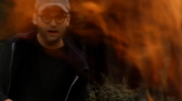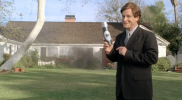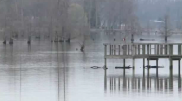Exxon Valdez: A Brief History
On March 23, 1989, the Exxon Valdez crashed hard aground on the coast at Prince William Sound, Alaska.
By March 25, the then-largest spill in U.S. history formed an oil slick five miles long and resisted any dispersement due to the calm waters of the disaster site. The U.S. Coast Guard reported that no wildlife was threatened, however there were already conflicting reports by community members.
A consultant referred to the spill as a potential “cleanup nightmare.”
A town hall meeting on the night of the disaster revealed general discontent over the lack of response by Exxon; many also expressed concern for the area’s fragile ecosystem.
By March 29, cleanup officials opted to start burning oil rather than containing the amount left at sea. President George H.W. Bush dispatched officials to monitor the situation and threatened to take over cleanup. The federal Bureau of Land Management mobilized about 100 people to start shoveling oily debris and wash beaches affected by the spill.
Although many debated on the effectiveness of methods employed, the Coast Guard did not believe there was technology available that could have helped the situation.
"[The cleanup] is not proceeding well -- believe me, that is an understatement. We've got a mess on our hands."
In a taped meeting between embittered community members and Exxon representatives, oil company executive Don Cornett assured the crowd that they would received due compensation. In answering a question about the compensation of lost income for fisheries and local fisherman, Cornett responded: “You won’t have a problem.”
After going missing for a short time, Capt. Joseph Hazelwood Hazelwood headed to court and was charged with three counts of second-degree criminal mischief as well as being drunk at the time of operating the ship. He was convicted on only one charge, however it was eventually overturned, as a court of appeals found that tainted evidence was used against Hazelwood during his trial.
At the site of the disaster, the slick was now “larger than Delaware,” and the Coast Guard now had control of the cleanup response as the governor was unhappy with Exxon’s response.
Brad Gamble, a resident from Kachemack Bay, Alaska wrote a guest column for the Bangor Daily News on May 15, expressing what he has seen of the disaster. Gamble wrote about the large numbers of wildlife killed, the oiled beaches that remain uncleaned, and how Exxon had all but ignored the local population’s advice when performing the cleanup response. He pleaded with the reader to call representatives and also encouraged readers to send towels to officials, to emphasize the cleanup that is still needed.
By summertime, oil had been found 700 miles from the initial area of disaster.
On June 23, the Exxon Valdez tanker was finally towed away from the site of disaster to face $25 million in repairs. A team of Exxon officers and salvage experts accompanied the vessel to monitor its status as it moved. After its eventual repair, the ship continued to transport oil for over a decade after the disaster.
After a summer of cleanup, Exxon planned a “raucous weekend” for workers, including 20 to 25 kegs of beer and over 500 attendees. Sailors and Marines also joined in the festivities. Although the job was far from over, Exxon decided to end cleanup as the prospect of severe weather surfaced.
The Alaska Department of Environmental Conservation proclaimed that it was not a time for celebration but “reflection and rededication.” The Coast Guard was also concerned that a celebration would communicate a sense of finality, as Exxon was expected to return in the spring to resume cleanup efforts.
Elsewhere, an environmental group, angered by President Bush’s absence from the scene of the spill, sent multiple plastic bags filled with oil-covered rocks to Exxon executives and members of Congress.
On April 25, 1991, Judge H. Russel Holland rejected the fines set for Exxon, explaining that they “do not adequately achieve deterrence.” Earlier that day, Exxon released its first quarter financials, showing profits of $2.2 billion.
In 1992, Exxon released a video outlining the oil company’s response to the disaster as a massive PR campaign. The video was made for young students to view and focused extensively on the scientific mechanics and discoveries surrounding the examination of the oil spill. Rather than focus on the ecological damage, it emphasized nature’s response to oil and maintained that ecosystems can recover quickly from the damage.
Twenty years after the disaster, Captain Joseph Hazelwood sent “a very heartfelt apology” to any directly affected by the spill. In “The Spill: Personal Stories from the Exxon Valdez Disaster,” a book chronicling the events surrounding the Exxon Valdez spill, an interview with Hazelwood reveals his journey through the court system and his new life as a consultant for a maritime law firm. The book also holds stories contributed by Exxon’s cleanup manager and fishermen in Alaska.
The true story is out there for anybody who wants to look at the facts, but that's not the sexy story and that's not the easy story.
Cordova, a community adjacent to Prince William Sound, Alaska, is still struggling more than 20 years after the events of Exxon Valdez. Along with the disappearance of herring from the area, the fishing industry never quite recovered, with some reporting a 30 percent loss of income.
John Platt, a third-generation fisherman, blamed the ending of his marriage on the spill, saying that he “wasted 20 years of [his] life” dealing with the disaster. Financially destitute and emotionally stressed, dozens of families like Platt's picked up and left the area, never to return.





